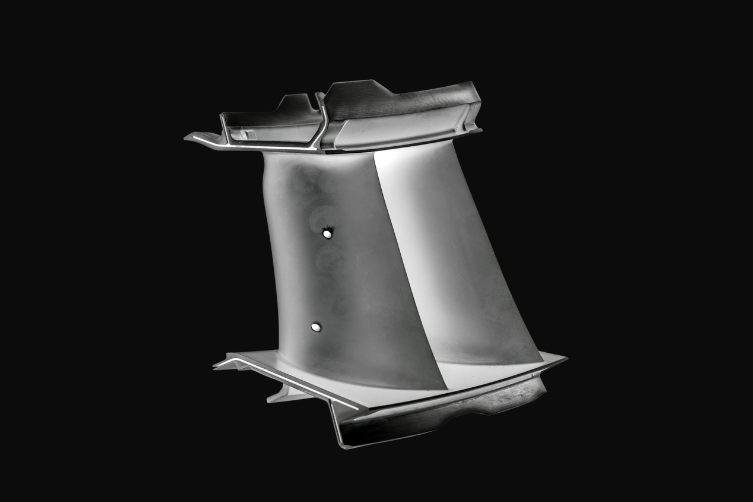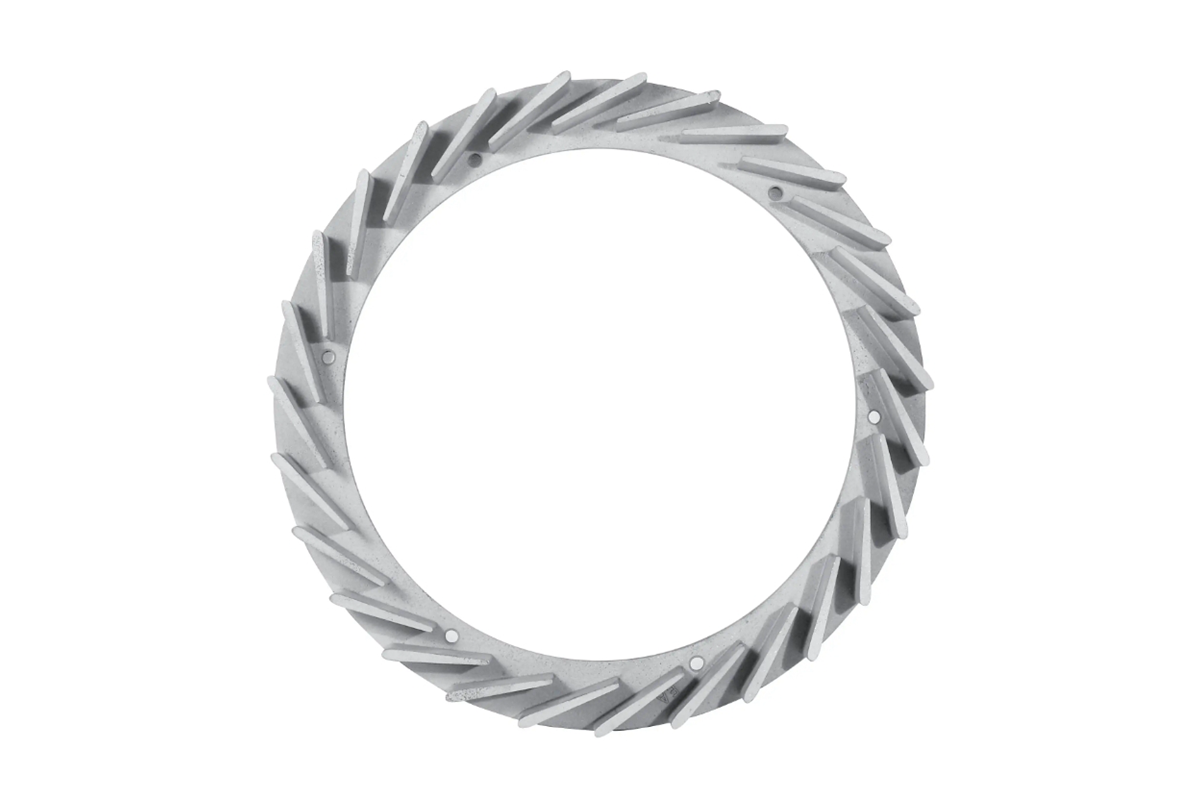How Direct Reading Spectrometer Benefits Produce Superalloy Directional Castings
Introduction to Direct Reading Spectrometer (DRS)
In high-temperature alloy production, the precision of material composition is crucial to ensuring the performance and longevity of the final parts. Superalloys, such as Inconel, Hastelloy, and Monel alloy, are engineered to perform in extreme conditions, making their production highly dependent on accurate control of the alloy's chemical makeup. One technology that plays a vital role in ensuring that the superalloys meet the required standards is the Direct Reading Spectrometer (DRS).
A Direct Reading Spectrometer is an advanced tool used to analyze the chemical composition of materials quickly and accurately. The primary function of a DRS is to determine the elements within a sample by measuring the light emitted from the material after it has been exposed to a specific energy source. Unlike traditional laboratory methods, which often require extensive sample preparation and can be time-consuming, the DRS provides real-time, non-destructive analysis that can be conducted directly on the production line. This is particularly important in producing superalloy directional castings, where material integrity must be maintained throughout the process.

The DRS ensures that the alloy composition remains within the required specifications, minimizing the risk of defects in parts like superalloy turbine blades or high-temperature alloy heat exchanger parts. This technology allows manufacturers to streamline the quality control process and ensure that the components produced meet the rigorous demands of industries such as oil and gas, aerospace, and aviation, where material performance is critical to safety and reliability.
The Function of Direct Reading Spectrometer in Superalloy Directional Castings
The role of the Direct Reading Spectrometer (DRS) in superalloy directional castings is multifaceted. Directional casting is a process used to produce high-performance components with specific grain orientations, often critical in aerospace and power generation industries. These parts typically must withstand extreme thermal and mechanical stresses, requiring precise control over their microstructure and chemical composition. The DRS allows manufacturers to achieve this level of precision. This is particularly crucial in processes such as superalloy directional casting, where controlling the grain structure enhances the performance of turbine blades and other critical components.
When it comes to superalloy directional casting, the DRS serves a key function in verifying the chemical composition of the alloy during the production process. Castings made from superalloys are highly sensitive to the proportions of elements like nickel, cobalt, chromium, and titanium. Even slight variations in these elements can significantly affect the alloy’s performance. DRS helps ensure that the desired alloy properties—such as strength, corrosion resistance, and heat resistance—are achieved by checking the composition of the molten metal before it is poured into the mold and again after the casting has solidified. This aligns with the importance of precise alloy composition control, which is critical for ensuring the durability and reliability of superalloy castings in the aerospace and energy sectors.
Moreover, because DRS provides real-time feedback, manufacturers can adjust the alloy composition on the fly, ensuring that each batch meets the exact specifications required for the part. This is especially important in large-scale production environments where the consistency of material properties is critical to the final product’s performance and safety. As seen in the vacuum induction melting process, real-time monitoring of the alloy’s chemical makeup enhances the precision and performance of complex components like turbine blades and other high-temperature alloy parts.
Superalloy Parts That Benefit from DRS in Directional Casting
Superalloy directional castings are essential for many high-performance applications, mainly where components must endure extreme temperatures and corrosive environments. The Directional Casting process, commonly used for producing complex geometries, benefits significantly from DRS (Differential Reflected Spectrometry), a technology that ensures the chemical composition is precisely monitored and controlled. This is critical for parts such as turbine blades, nozzle rings, and gas turbine components, where any deviation in material properties could lead to reduced performance or failure under stress.
Superalloy Castings
Directional casting plays a vital role in creating superalloy castings for highly complex parts, such as turbine blades and nozzle rings, subjected to extreme temperature gradients during operation. The DRS ensures that the molten alloy used in these parts has the right chemical composition, guaranteeing optimal performance in high-stress environments. This control over alloy composition is crucial for ensuring the long-term reliability of components like turbine blades, where any inconsistency could lead to premature failure.
Forged Superalloy Parts
After superalloy directional castings are created, many parts undergo a forging process to improve their mechanical properties, such as strength and durability. The DRS plays a vital role in verifying that the correct alloy is used during forging. Whether the components are precision parts like compressor blades or structural elements like engine casings, maintaining the consistency of the alloy’s chemical composition is crucial for ensuring their reliability in demanding applications such as aerospace or power generation.
CNC Machined Superalloy Parts
In applications where high precision is required, such as aerospace, superalloy CNC machining is often used to further process superalloy castings. The DRS ensures that the material properties are consistent before machining begins. This is essential because variations in alloy composition can affect not only the machinability but also the overall performance of the final part. By using DRS during the pre-machining stage, manufacturers can ensure that the part will meet stringent requirements for strength, durability, and precision.
3D Printed Superalloy Parts
Additive manufacturing, or 3D printing, has become popular for creating complex superalloy components. In this process, superalloy 3D printing offers advantages in producing intricate geometries that are difficult to achieve with traditional methods. However, to ensure the quality of 3D printed superalloy parts, the DRS provides real-time feedback to ensure that the metal powder used in the printing process meets the required chemical composition. This monitoring is crucial for ensuring that the final printed parts maintain the desired strength, resistance to thermal fatigue, and overall performance in high-temperature applications.
Comparison with Other Material Testing Processes
While the Direct Reading Spectrometer is an invaluable tool for analyzing the composition of superalloys, it’s not the only method available for this purpose. It’s essential to understand how DRS compares to other testing processes commonly used in manufacturing superalloy parts.
X-Ray Testing: X-ray fluorescence (XRF) is another common method used to determine the elemental composition of materials. While XRF is a non-destructive testing method, it generally requires a more significant amount of preparation, such as grinding or polishing the sample. It can be less precise than Direct Reading Spectrometer. DRS offers faster analysis and is more suited for real-time, online monitoring during the production process. Additionally, X-ray inspection ensures the internal structure of superalloy components is defect-free, offering insights beyond elemental composition.
Glow Discharge Mass Spectrometry (GDMS): GDMS is a powerful material analysis technique capable of detecting a wide range of elements at low concentrations. However, it requires specialized equipment and is often more time-consuming and costly than DRS. In comparison, DRS offers quicker and more convenient results for on-the-spot analysis, making it ideal for production environments where time and efficiency are critical. GDMS Checking, while precise, can be less suited for high-throughput environments than DRS.
Metallographic Microscopy: This technique involves examining the microstructure of materials at high magnifications. While metallographic microscopy is essential for understanding the fine-grain structure and overall casting quality, it does not provide direct information about the chemical composition. On the other hand, DRS provides precise elemental data, which can be used in conjunction with microscopy to ensure that the material properties and structure are correct. This combination enhances the accuracy of the final product’s quality control process.
Tensile Testing: Tensile testing measures the mechanical strength of materials under stress. While this testing is critical for ensuring that superalloy parts can withstand operational stresses, it does not provide direct information on chemical composition. By using Direct Reading Spectrometer to ensure the right alloy mixture before tensile testing, manufacturers can guarantee that the material's properties align with the test results. This helps prevent discrepancies between the alloy’s theoretical composition and mechanical performance during testing.
DRS stands out for its speed, accuracy, and ability to provide real-time, non-destructive analysis compared to other testing methods. It is particularly well-suited for high-performance superalloy directional castings.
Industries and Applications of Superalloy Directional Castings with DRS
Superalloy directional castings are used in several high-performance industries where the components must withstand extreme thermal and mechanical stresses. The Direct Reading Spectrometer (DRS) benefits extend to various sectors, ensuring the highest quality standards for critical components.
Aerospace and Aviation
In the aerospace and aviation industry, superalloy directional castings produce turbine blades, nozzle rings, and other components that operate under high-temperature and high-pressure conditions. DRS helps ensure the alloy compositions are precise, enabling the parts to perform optimally in jet engines, gas turbines, and other critical systems. Using superalloy jet engine components in these applications ensures the highest efficiency and reliability in aerospace engines.
Power Generation
Superalloy castings are widely used in the power generation for components like turbine blades, heat exchangers, and nozzle rings. DRS ensures that the alloys used in these components can handle the extreme conditions inside power plants, including high temperatures, corrosive gases, and mechanical stresses. Components such as superalloy heat exchanger parts are critical for maintaining thermal efficiency and system integrity under demanding conditions.
Oil and Gas
In the oil and gas industry, superalloy castings are essential for valves, pumps, and heat exchangers. DRS plays a crucial role in ensuring that the alloy compositions meet the rigorous requirements for corrosion resistance and high-temperature performance in offshore drilling, refining, and petrochemical processes. High-performance pump components are particularly vital in ensuring the operational reliability of equipment in extreme environments.
Military and Defense
The military and defense industry relies on superalloy directional castings for components in missile systems, armor plating, and jet engines. DRS helps maintain the consistency and quality of materials used in these high-performance applications, ensuring that each part meets the strict specifications required for defense systems. Superalloy missile segment components ensure durability and resistance to both thermal and mechanical stresses encountered in military operations.
Nuclear
In nuclear power generation, superalloy castings are used for reactor vessel components, heat exchangers, and other critical systems. DRS ensures that the materials used in these applications are stable and can withstand the extreme thermal and radiation conditions in nuclear reactors. Components like superalloy reactor vessel parts are essential to ensuring the safety and efficiency of nuclear power plants.
Through its precise and real-time analysis, the Direct Reading Spectrometer helps ensure that superalloy directional castings meet the stringent requirements of these diverse industries. This advanced technology ensures that each component maintains the highest quality and performance standards, which is critical for mission-critical applications across various sectors.
FAQs
What is the primary function of a Direct Reading Spectrometer in superalloy production?
How does DRS compare to traditional chemical analysis methods like GDMS and XRF?
Which types of superalloy parts benefit the most from DRS during manufacturing?
In which industries are superalloy directional castings most commonly used?
Can DRS be used to monitor the alloy composition during 3D printing of superalloy parts?



